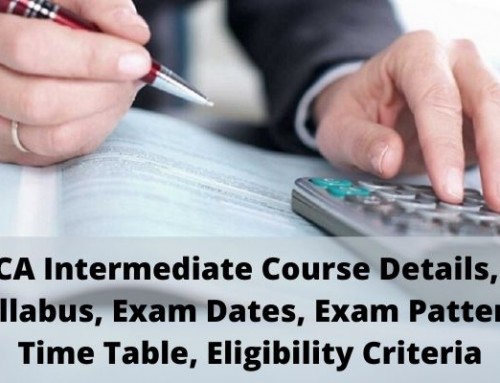NMAT is an entrance test for admission into various courses of Business Management Studies in. This test is going to be conducted from 7th October 2014 to 20th December 2013. The long test window provides candidates a convenience to choose a test date based on their comfort level. This is the only test which gives an opportunity to a student to take two retakes after first attempt to improve their scores, though it is not compulsory to take a retake.
Structure of the paper
The paper pattern of the NMAT exam is more or less same every year and hence once can strategize in advance.
Every candidate who takes NMAT gets a unique but equivalent question paper. Test comprise of three sections viz; Language Skills, Quantitative Skills and Logical Reasoning. All three sections are individually timed. Language Skills has 32 questions to be attempted in 22 minutes, Quantitative Skills has 48 questions to be attempted in 60 minutes and Logical Reasoning has 40 questions to be attempted in 38 minutes. There are no negative marking in NMAT but students should note that it is important for them to perform well relative to other students in each of the 3 sections of the test as the score of each section and the overall score is used to shortlist the candidate for the second stage of the selection process.
Ideally, the candidate scores are declared in a span of 4-5 weeks after the exam. Their scores are normalised and equated to bring about parity and fairness.
Features of NMAT
- NMAT is more student-friendly as you can decide the order of the sections you like to attempt. Although, once you select the section and start the test, you cannot change the order midway.
- Each section is time bound but you can end your section before the schedule time. However, this time would not be added in the next section.Also the candidates are allowed to take breaks during the exam. These breaks are time bound which means that the timer keeps on running. In other words, if you manage to finish a section before the scheduled time, you can utilize that time for your break.
- Initially, you cannot review all questions at one go. You can review all questions only when you have reached the last question in that particular section. This means you cannot jump directly to the last question or in that case to any other question. You can go to previously seen questions by clicking previous button.
- When you start a group question, you don’t know how many questions that set has. This makes planning of attempts difficult.
- Highlighting the text in RC and DI is not allowed, so finding relevant data may become difficult. So, you need practice NMAT RC accordingly.
Difficulty Level
The overall difficulty level of the NMAT exam is average. However, the time constraint makes it difficult. NMAT is more about your speed than accuracy (though accuracy is also important). Since there is no negative marking, you should ideally attempt all 120 questions within the two hours, which leaves you with one minute for each question. One should really focus on your speed and time management in the NMAT exam while practicing the mocks.
Language skill
This section has two RC passages (300-400 words) with 4-5 questions each and has a good blend of reasoning to inferential to direct questions. You need to strengthen your grammar and vocabulary skills. Grammar questions are easy; simply need to apply basic rules. If you know words that you would find in novels or magazines or newspaper columns that will NOT help you to solve synonyms and antonyms based questions. You need to be really good at it. This section also has questions based on fill-in-the-blanks (double, clause and preposition based), paragraph jumble. Ideally one needs to solve only one RC and then focus on rest of the questions and leave one RC for the end, if time permits.
Difficulty: Easy to Average
Good attempts: 24-26 questions with 80% accuracy and remaining questions as blind attempts.
Quantitative skill
This section consisted of Data Interpretation (DI), Data Sufficiency (DS) and Quantitative Aptitude (QA) questions. Questions in QA are generally asked from almost every topic and are comparatively easier few tricky one. You should ideally attempt all QA and DS questions first and then if time permits solve DI questions as DI questions are very lengthy and time consuming with close options. Also you should look at elimination of options if possible and then attempt that question.
Difficulty: Average to Difficult
Good attempts: 33-35 questions with 80% accuracy and remaining questions as blind attempts.
Logical Reasoning
About 10-12 questions are based on verbal reasoning (Conclusion, Inference, Assumption, Syllogism and strong & weak argument). If you have the basic idea about questions pertaining to arrangement, coding decoding, numerical grids, direction based, series, sequential input output etc. topics which are part of logical reasoning than this section would be a cake walk. Also, this section can actually act as a booster to your overall score if your speed is very good. It is advisable to should stay away from Input-Output questions as in NMAT most often these questions take quite a lot of time.
Difficulty: Easy to Average
Good attempts: 30-32 questions with 80% accuracy and remaining questions as blind attempts.
Strategy
One should have the target in mind before practicing the mocks. If the trend of difficult papers continues, then the cut-off would be more or less the same. Following are the last year’s cut-off:
| Course | Overall | Quant | Logic | Verbal |
| Core MBA/MBA Banking/MBA Capital Market/MBA HR (Mumbai Campus) | 209 | 74 | 61 | 55 |
| Pharmaceutical MBA (Mumbai Campus) | 169 | 50 | 50 | 50 |
| Bangalore and Hyderabad Campus | 200 | 70 | 55 | 55 |
Always aim at around 220 marks overall, which should be ideally possible if you plan your paper properly and practice your mocks accordingly.
VERY IMPORTANT
Avoid last minute hassle and ensure that you carry each of the following:
- a) Primary ID
- b) Secondary ID
- c) Admit card
- d) Confirmation Email
- e) Photocopy of primary ID.













